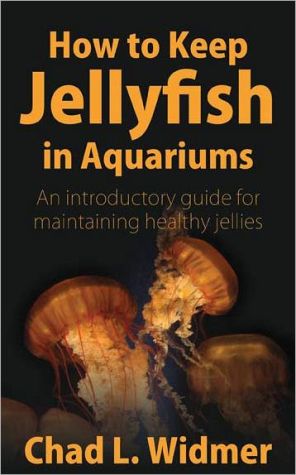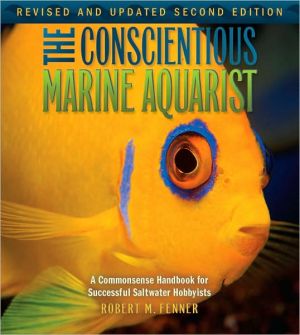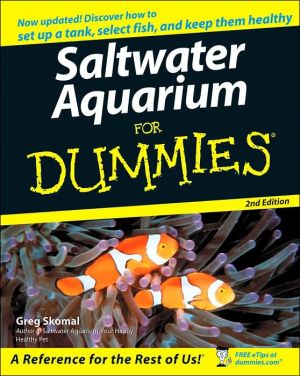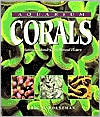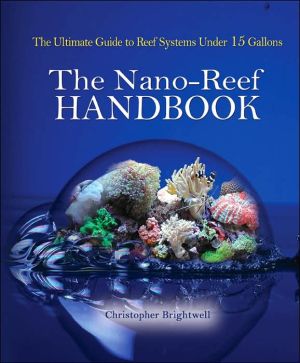How to Keep Jellyfish in Aquariums: An Introductory Guide for Maintaining Healthy Jellies
Many people want to learn how to keep and grow jellyfish in aquariums, but don't know where to start. Though the scientific literature contains clues, the language can be cryptic for the uninitiated, and the references can be tricky to track down without access to a well-stocked university library.\ In this first-of-its-kind guide, Chad L. Widmer presents in plain language some proven methods for jellyfish husbandry. With some study, attention to detail, and a little pioneer spirit, you'll...
Search in google:
Many people want to learn how to keep and grow jellyfish in aquariums, but don't know where to start. Though the scientific literature contains clues, the language can be cryptic for the uninitiated, and the references can be tricky to track down without access to a well-stocked university library.In this first-of-its-kind guide, Chad L. Widmer presents in plain language some proven methods for jellyfish husbandry. With some study, attention to detail, and a little pioneer spirit, you'll soon be enjoying your own jellies, along with your newfound jelly-keeping skills.
\ Water Quality\ Healthy captive jellyfish require excellent water quality. Fortunately, one can use either natural or artificial seawater for jelly keeping. I won't go into all of the details of how to treat or make artificial seawater in this guide because there are plenty of other resources available online and in other books. But treat the water in your jelly habitat as you would treat a living organism. Healthy jelly-system water should be well cared for, with all the necessary elements in proper proportion, and maintained at an appropriate temperature. Different jellyfish species have different tolerances for seawater conditions ranging outside of their normal operating conditions. Below I briefly discuss the consequences of exceeding water quality parameters with commonly kept jellies.\ All jellies have an optimal temperature range in which they can be maintained and remain healthy. When deciding on water temperature, it is better to accidentally set the temperature too low to start. If the temperature is too high for over forty-eight hours, enzymes inside the jellies can get bent out of shape. Affected jellies evert their bells (looking like a blown-out umbrella in a wind storm) and have up to a 90% mortality rate. If the temperature is too low, the enzymes are spared, but the jellyfish pulse less, feed less, and metabolize food more slowly, leading to slow or reversed growth. Fortunately, if you realize that the temperature is too low, you can increase it by a few degrees, and the jellyfish generally recover.\ If you choose to collect your own seawater from the ocean I highly recommend that when transporting your water home you use tied-down recycled water jugs with secure lids for the trip. I once used garbage pails with lids that weren't very secure to transport seawater. I had painstakingly carried seawater-filled buckets over sharp, jetty rocks while dodging waves at the Humboldt Bay jetty. I arrived safely at my truck, but on the way home I took a corner a little too sharply, accidentally spilling about 200 gallons and creating a mini-tsunami on the freeway.\ The average salinity of seawater used for growing most kinds of jellyfish is about 33 parts per thousand (also known as practical salinity units, or PSU). If the salinity in your jellyfish system is too low, jellyfish may go downhill due to osmotic stress. Species living in estuaries are far more tolerant of fluctuating salinity than their open-ocean counterparts. Jellies that are exposed to a high salinity and then returned to appropriate levels generally recover. Therefore, it is important to monitor the salinity levels in your system daily and make appropriate adjustments. In lighted, warm-water life-support systems, water tends to evaporate quickly, so it is often necessary to add fresh water to make up for what is lost due to evaporation.\ Keep track of your recipes for growing a particularly good batch of jellies and try to duplicate and improve upon them over time (e.g., "I kept a good group of Japanese moon jellies at 34 ppt, 15°C, and fed them nauplii and small krill . . .").\ Comparatively speaking, jellyfish are more tolerant of lower oxygen concentrations for extended periods than are fish. Having a high tolerance for low oxygen concentrations is good news when shipping jellyfish because they can get by with low oxygen in their shipping bags for a few days at a time. Likewise, systems that are supersaturated with oxygen tend to be bad for some jellies. Oxygen can come out of solution inside the jellies' gut canals and cause internal bubbles. Excessive oxygen can also be toxic to some jellies, which is manifested as many small holes or pits on their bells.\ Keep track of important happenings in your jellyfish system. It is a good idea to keep a log book next to the system in order to record feeding times and amounts, performed maintenance, and water quality parameters and times (e.g., salinity, temperature, dissolved oxygen, date of last water change, etc.). A good log book can help you unravel the mystery of why a cohort of jellyfish did particularly well or poorly.\ Basic Life-Support System Components to Consider\ Life-support systems for jellyfish aquariums are similar to life-support systems in most other aquaria. In the simplest jellies system, there is a reservoir for holding water and a main jellies display tank. An electric pump in the reservoir sends water to the various components of the system much like the heart of a living organism. Water is pumped from the reservoir to a chiller (if required), which then returns water to the reservoir. Water is also sent to the jellyfish display tank. After the water circulates through the display tank, it returns to the reservoir after first passing through a trickle filter and a bag filter. Protein skimmers don't belong in your jellyfish system. There is growing evidence supporting the idea that jellyfish can use dissolved organic materials obtained directly from the water. A protein skimmer may rob the jellyfish of food.\ If water goes into a jellyfish tank, then water also has to leave the tank. The general idea of water movement in jelly tanks is to generate enough current to keep the jellies up and off the bottom of the tank without having them get sucked out of the tank as water leaves. Water leaves the display tank through an outflow port (hole where water exits the tank); most outflow ports are covered with some kind of screen mechanism to keep jellies from leaving the display tank along with the water returning to the reservoir. Several neat tricks have been developed to keep jellies from sticking to the screens covering the drainage ports. Some of the most common methods are laminar flow plates, spray bars, and air bubbles. What these are and how they work are discussed in the next chapter.
